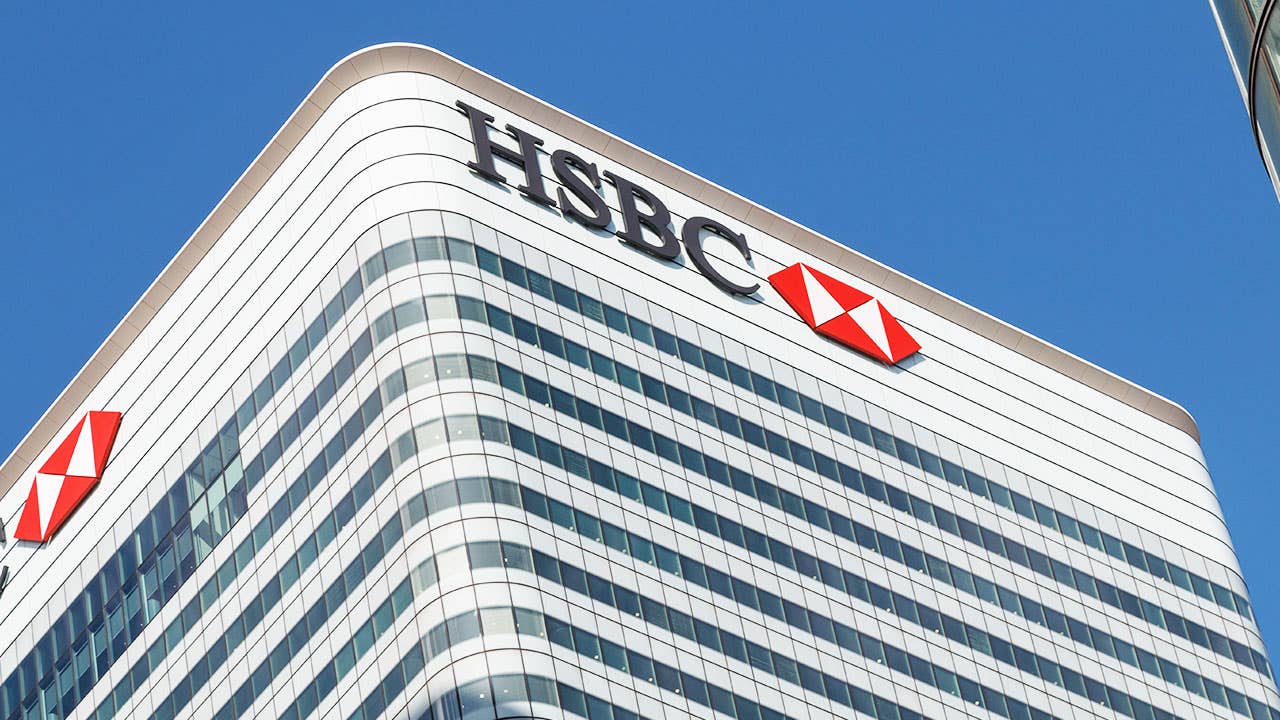How to do an HSBC balance transfer

The Bankrate promise
At Bankrate we strive to help you make smarter financial decisions. While we adhere to strict , this post may contain references to products from our partners. Here's an explanation for . The content on this page is accurate as of the posting date; however, some of the offers mentioned may have expired. Terms apply to the offers listed on this page. Any opinions, analyses, reviews or recommendations expressed in this article are those of the author’s alone, and have not been reviewed, approved or otherwise endorsed by any card issuer.
Key takeaways
- HSBC is not currently offering a promotional introductory balance transfer offer for new U.S. cardmembers.
- Balance transfers must be completed in the first 60 days after opening your account, or they will be subject to the card’s standard variable APR.
- Transferring a balance to a card with a 0% APR offer can help to increase your credit score, but it can also lower the average length of your credit history.
If you’re considering transferring a balance to an HSBC credit card, there are several details you should know before getting started. Our HSBC credit card balance transfer guide will cover everything you need to know, including how to do a balance transfer with HSBC and some frequently asked questions.
What to know about HSBC credit card balance transfers
In the fourth quarter of 2021, HSBC sold off most of its U.S. credit card portfolio. Previous cardholders had their accounts transitioned to Premier Finance Card Program™ (PF|CP), and were issued new credit cards under First Bank & Trust.
Before applying for a current HSBC credit card, you’ll need to have an existing U.S. HSBC Premier checking account. When transferring a balance to an HSBC credit card, keep in mind:
- You’re responsible for the payments from your other lenders. In order to maintain a good credit score and stick to your budget, you should continue making payments on your other credit cards until the transfers process.
- Some balance transfers are not allowed. You cannot transfer balances from an HSBC credit card, HSBC loan or HSBC affiliate to another HSBC card.
- All promotional offer balance transfers are subject to fees. Depending on the card you have, balance transfers with HSBC include a transfer fee of $10 or up to 5 percent of the transfer, whichever is greater. HSBC states it does not charge balance transfers outside of promotional offers.
- Promotional balance transfer offers have time limits. Balance transfers with HSBC must be completed in the first 60 days after opening your account. HSBC may still accept balance transfers after the promotional offer expires, but the transfer will be subject to the card’s standard variable APR.
- You may receive a promotional balance transfer offer. If you already have a card with HSBC, it may send you a promotional balance transfer offer. Term limits will be set within the offer details.
How to do a balance transfer with an existing HSBC card
Even though there are no HSBC cards currently offering 0 percent introductory APR promotions, you can still complete a balance transfer and pay the regular variable APR applied to the account — although this would likely not be worth doing since you won’t save money on interest and will still have to pay balance transfer fees.
If HSBC sends you a balance transfer offer for your existing card, then you can complete your balance transfer online, by phone or with a credit card check to do an HSBC credit card balance transfer. Here are the steps to complete each type of transfer:
How to do an HSBC balance transfer online
To complete a balance transfer online with an existing HSBC card, follow these steps:
- Log in to your HSBC account in the top right corner and navigate to the account summary screen.
- Choose the credit card account you want and click “Manage,” followed by “Manage card and alerts.”
- Go to the page for that account and select “Menu,” then “Manage accounts,” followed by “Balance Transfer.”
- Follow the prompts and provide the information required to begin your balance transfer, which usually includes the other account’s billing address. You can find this information on your credit card bill, but you may want to check with your issuer to ensure you have the right address for balance transfers.
- Once you enter the details of your accounts, click to accept the terms and conditions and then hit submit.
You can also complete your balance transfer by using HSBC’s chatbot. To do so, simply click on the “Chat” icon in the bottom right corner of the screen. Once there, tell the chatbot that you’d like to complete a balance transfer, then follow its prompts. It’ll guide you through the steps outlined above.
How to do an HSBC balance transfer with a check
Balance transfer checks allow you to move a balance from one credit card account to another with a different issuer. To use a HSBC balance transfer check, follow these steps:
- Identify the account that you want to transfer your debt from, as well as the card you’ll be transferring the debt to. Figure out how much debt you want to transfer, keeping in mind your credit card’s balance transfer fee and credit limit.
- Make your balance transfer check out for the desired debt amount. Use it to make a payment against the card currently holding the debt.
- Submit your check and wait for the balance transfer check to clear. Once cleared, the check will have counted as a “payment” against the account with debt, therefore removing it from the card. The debt will then show up on your other account.
How to do an HSBC balance transfer over the phone
To perform a balance transfer over the phone, simply call the number on the back of your credit card or call HSBC’s customer service line at 888-662-4722. Be sure to have the details of your balance transfer ready, such as what account you want to transfer a balance from and how much you want to transfer.
How to transfer a balance to a new HSBC card
If you are able to secure a new card with an introductory balance transfer offer, you can complete your balance transfer with the following steps:
- Gather your balance transfer details. Make sure to have the bank/issuer name, bank/issuer account number and bank/issuer address on hand before you begin.
- Begin your HSBC credit card application. Toward the end of the application process, you’ll be asked to enter the accounts from which you’d like to transfer your balances.
- Follow the prompts to complete the balance transfer. This includes completing your card application.
Note that HSBC transfers the full amount from each card in the order you list them, up to your initial balance transfer limit. This limit is less than your available credit limit since the limit includes balance transfer fees and any interest charges. If you reach the limit on the initial balance transfer, HSBC will cancel the request for that account or reduce the amount of the balance transfer to match your limit.
The bottom line
If you’re offered a 0 percent introductory APR on balance transfers for a new or existing HSBC card, transferring higher-interest debt may be worth it. Promotional offers for balance transfers are a great way to consolidate debt without the stress of paying added interest. The key, though, is to remember to use your card wisely and to draft a plan to pay off your transferred debt before your card’s 0 percent promotional APR offer expires.
However, if you’re not offered a 0 percent APR offer with HSBC, it would be better to transfer a balance to a card that does provide an intro offer. The top balance transfer cards typically provide longer intro periods (up to 21 months) to pay off balances interest-free, and many of them include lower transfer fees of 3 percent.
Before transferring a balance, be sure to compare card offerings to make sure you’re getting a balance transfer offer that works best for you.
Frequently asked questions (FAQs) about HSBC balance transfers
-
HSBC states balance transfers typically take at least seven to 10 days to be processed. Once your request for a balance transfer has been processed and approved, you will receive a balance transfer for the amount requested (or your credit limit if your previous balance exceeds your new credit limit).
-
No, as of publishing HSBC did not offer any balance transfer credit cards, nor do they have credit cards with 0 percent introductory APR offers.
-
Before you jump into your HSBC balance transfer, consider how it may affect your credit score. If you’re able to transfer high-interest debt to an HSBC credit card with a 0 percent APR offer, you should be able to pay down your debt faster, which will help to increase your credit score. However, your score might be negatively impacted because of:
- Hard credit inquiries: If you’re opening up a new HSBC credit card to complete your balance transfer, that means you’ll be shopping for new credit, which makes up 10 percent of your credit score. The act of applying for a new credit card will cause the lender to make a hard inquiry on your account, so your score may drop by a few points.
- Credit history changes: The overall length of your credit history accounts for 15 percent of your FICO credit score, and opening a new credit card will also lower that average. Fortunately, the longer your credit history is as a whole, the less impact a new account will have on this aspect of your credit score.
- Credit utilization issues: If you’re moving a balance from one card to a new card and keep both cards open, you’re not reducing your overall debt — but you are reducing your credit utilization, which is the amount of credit you’re using compared to all of your available credit. As you pay down your debt, your credit utilization should drop even further, which is great for your credit score. However, if you don’t pay down your debt and instead continue to charge purchases to your credit cards, your credit utilization will rise instead of fall.
Related Articles



